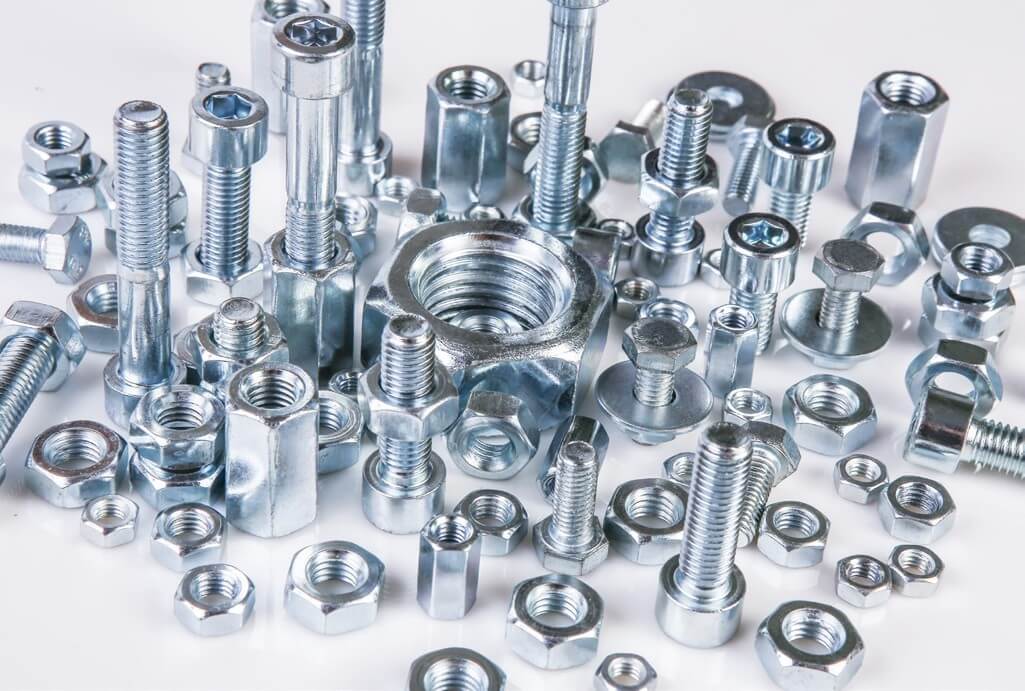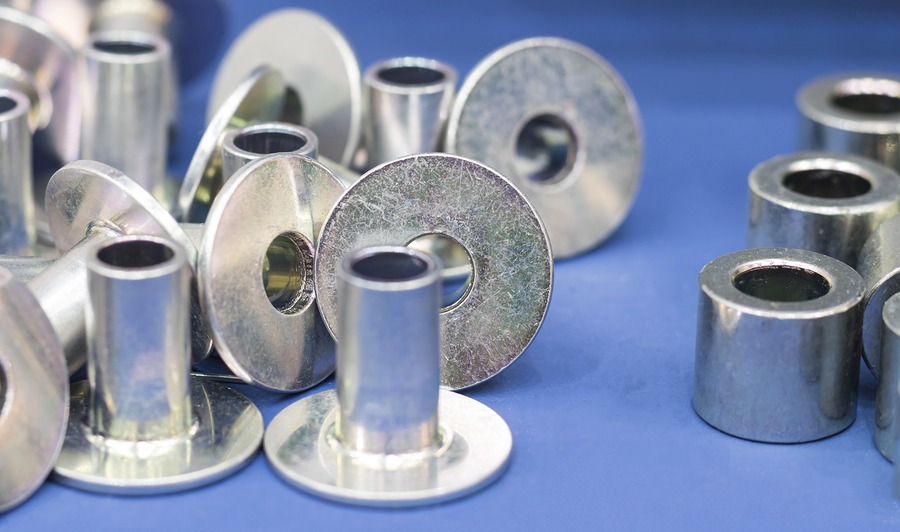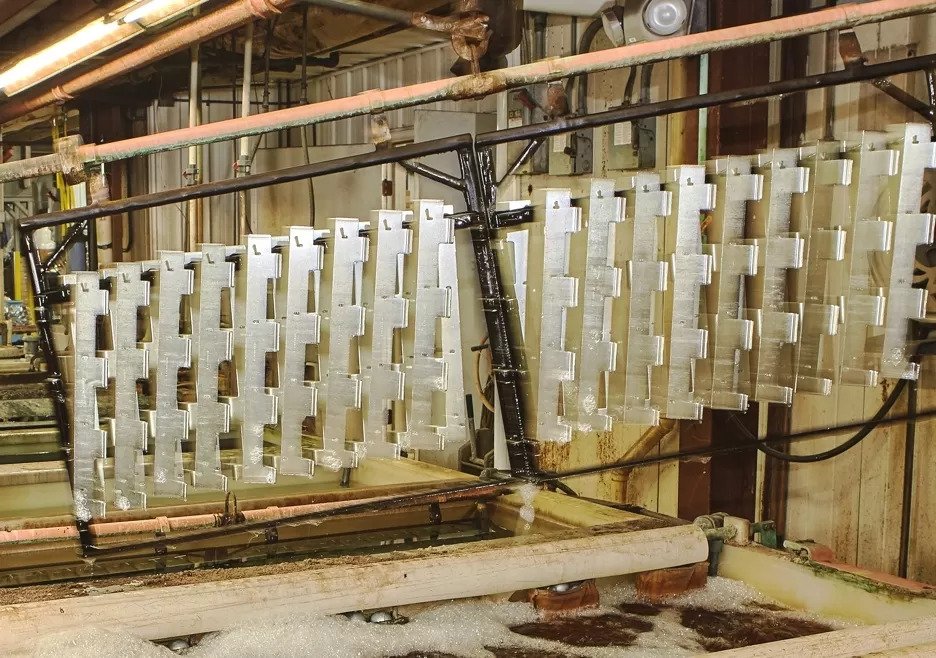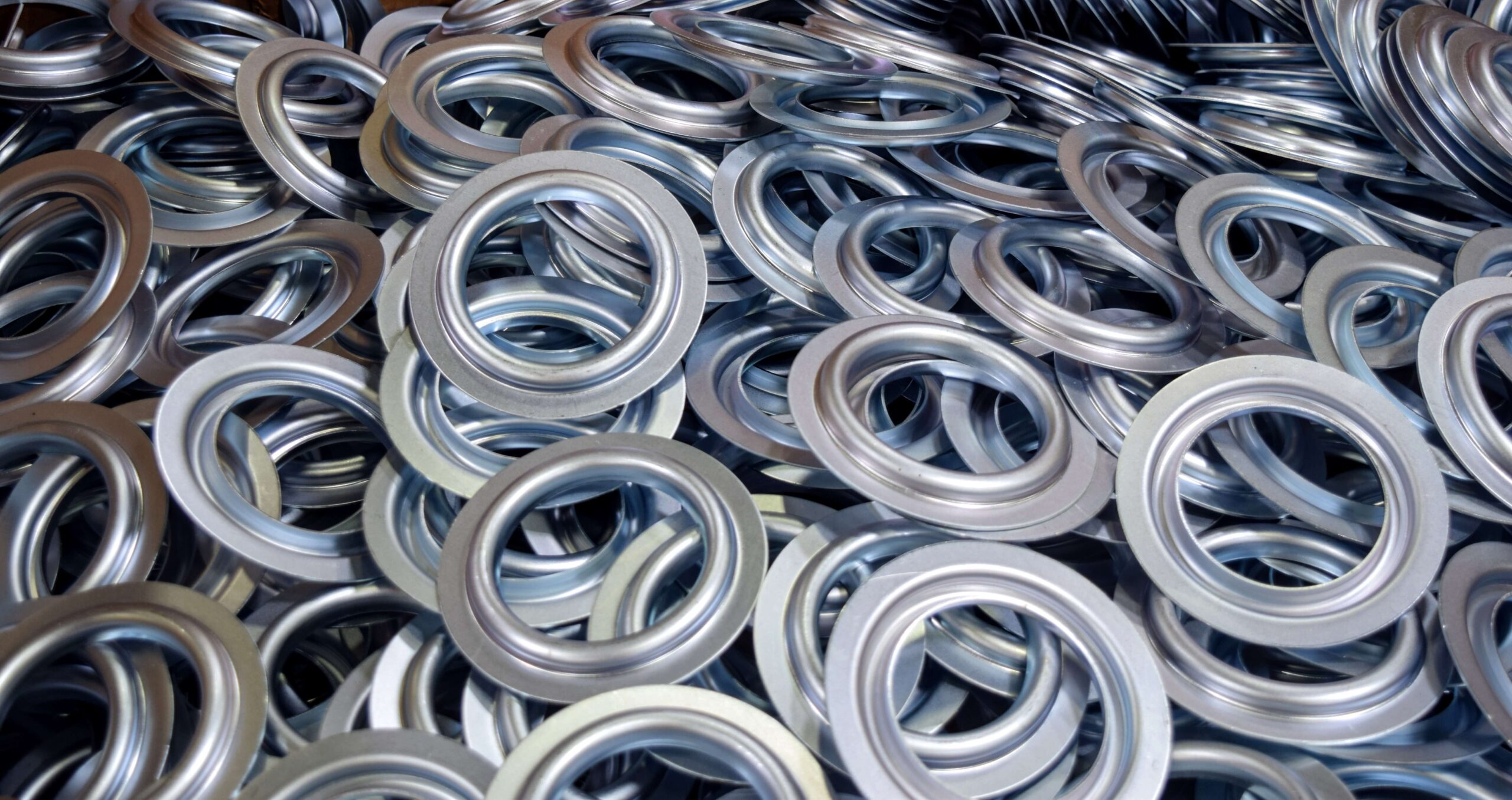
Rust is one of the biggest threats that face metals. According to some sources, the cost of corrosion-related material losses is about $276 billion annually – and that’s just in the United States.
It goes without saying that there’s a need for a method that can help reduce rust and optimize the efficiency of manufacturing processes. And, zinc plating seems to be one of the most popular methods of doing this at the moment.
In this article, we’ll look into what industrial zinc plating does, as well as how you can get it done as well.
What Does Zinc Plating Mean?

So, let’s dive into the major issue – what is zinc plating?
Understanding Zinc Plating and its Purposes
Corrosion has always been a major issue when it comes to metals. However, over the years, metallurgists have found different ways to handle it. And, zinc plating is one of those ways.
Known to some as zinc electroplating or zinc galvanization, this process essentially involves applying a thin layer of zinc to the surface of a metal. The process is done via electroplating, and you achieve this by dropping the metal part in a zinc solution and adding an electrical current.
Interestingly, the process of plating with zinc is actually pretty new. Before the ‘80s, most manufacturers used cadmium for electroplating and implementing some form of corrosion-resistance. But, cadmium itself wasn’t perfect; the material is very dangerous, and extended exposure to it can be hazardous. So, any process that works with cadmium is essentially dangerous by default.
Eventually, though, zinc became the de facto material for electroplating. You can get galvanized steel with zinc plating and be assured that it’ll hold its own against any corrosive elements, and while zinc isn’t as corrosion-resistant as cadmium, it at least provides a more environmentally sustainable option.
Manufacturers still plate using cadmium, but zinc has become a more popular option. A material with a zinc finish can easily withstand exposure to harsh environments, and you don’t have to worry about overall stability as well.
Now, it’s easy to believe that the entire purpose of having zinc-plated steel or some other product is to protect it from corrosion. And, in many ways, you’d be right if you thought this way. But, that’s really just the tip of the iceberg. For zinc plating, there is so much more to be explored. But, some of the reasons why a zink plate might be placed on a product include:
- Corrosion Resistance: We already pointed this out. In most cases, zinc stripping helps to ensure that materials are able to overcome the effects of corrosion.
- Getting Stronger: That said, bright zinc plating can also help to ensure that the base material is even stronger. It’s able to resist more external factors, so it becomes much more durable.
- Looking Good: There is also the aesthetic benefit that a zinc plating solution offers. It makes materials look better, and depending on your requirements, this just might be a major selling point for you.
- Connecting With Paint: With zinc plating on steel, you get a surface that easily takes in paint and other coatings. It’s a point that is closely related to the previous one, but it goes even much deeper.
- Electrical Properties: Generally, a zinc-plated material will be able to conduct electricity better. This makes materials like these especially great for a broad range of functionalities.
What Are The Different Types of Zinc Plating?
It’s easy to believe that zinc plating is a one-and-done type of operation. And, for many people, this is true. But, the process is incredibly varied – and understanding the different options available when considering the zinc plating process will help you to determine which of them is better for you.
So, here are the most prominent variants:
- Electroplating: When people think about zinc plating, they mostly view zinc as electroplating. Here, you deposit a thin layer of zinc onto the material using an electrical current, thus providing the corrosion-resistant properties needed.
- Barrel Zinc Plating: With this process, you take small parts and place them into a rotating barrel that contains the zinc plating solution. As the barrel moves, you can ensure that every part of the base material is plated.
- Rack Zinc Plating: Next, we have rack zinc plating, which involves mounting the different base materials on racks and dropping them in the zinc plating solution.
- Chromate Conversion Coating: This process combines the traditional zinc plating process with a chromate conversion coating. An extra protective layer is added, offering the corrosion resistance that the base material needs and also making it better for the material to soak up paint if the need arises.
- Zinc-Nickel Plating: If you’re looking to add a higher level of corrosion resistance than what you’d get with just ordinary zinc plating, then you can consider zinc-nickel plating. Nickel is already known for its ability to resist corrosion, so adding a little bit of it to the zinc coating makes the base material even stronger.
- Zinc-Iron Plating: Remember the explanation for zinc-nickel plating? Well, switch the “nickel” part and add “iron.” The same outcome can be achieved as with a zinc plate – just with a different material and its corrosion-resistant characteristics.
- Hot-Dip Galvanizing: In hot-dip galvanizing, you drop your base material into molten zinc. The process leads to a thicker coating of zinc, which is functional for different industrial equipment.
Zinc Plating Equipment and Materials

Before beginning with the zinc plating process, you want to make sure that you have everything you need ready to go. To that end, you can add the following to your checklist:
Metal Objects
First, you need the metal you’re trying to plate. A zinc plater works with different metals, so you’re free to choose which works for you here. And, you can easily get a zinc plating kit to help you out.
Interestingly, the base material is what acts as the cathode in this process. It is connected to the power source’s negative terminal, taking in a positive charge from the zinc ions.
Racks or Barrels
For zinc plating on steel, you use barrels or racks to hold the steel material together.
As you can imagine, racks are used in rack plating – where you suspend each individual object in the solution. On the other hand, barrels work for barrel plating, with the focus being on small items that are produced en masse.
Zinc Salts
Generally, you have different options here. They include:
- Sinz chloride
- Zinc sulfate
- Zinc-nickel sulfate
Essentially, you take these salts and dissolve them in the electrolyte solution. Their job is to provide the ions needed to implement the plating process itself.
Zinc Anodes
You’d need solid zinc anodes, which will be placed in the plating solution. As soon as an electrical current passes through the solution, the ions move from the anode to the base material.
Electrolyte Solution/Additives:
When you create a plating bath, you need different chemicals and additives that make the plating process happen. You’re generally free to have anything here – wetting agents, brighteners, and other compounds. At the end of the day, the focus should be on what you’re trying to achieve with the base material.
Plating Tanks and Equipment
You also need to remember the additional tools used in this process. Tanks, etc. should be made using strong materials that resist corrosion and any contact with chemicals.
Additional Related Materials
- zinc nickel plating
- zinc chromate plating
- zinc plating copper
A Guide To The Zinc Plating Process
Now, let’s look into how this process works and what makes it especially unique
Types Of Zinc Plating Procedures
Before going into an in-depth look at zinc plating, let’s take a quick moment to examine the different variations of processes available:
Barrel Plating:
With barrel plating, you mostly place small parts like bolts or screws into a barrel with the zinc plating solution. As the barrel spins, you’re able to apply the coating to any part of the base material you want.
If you have a small plating task and would need to incorporate zinc, barrel plating is probably what you want to do.
Rack Plating:
For rack plating, you suspend bigger items with irregular shapes on racks and drop them into the solution. The process is perfect since it allows you to control the position of each part.
Alkaline Non-Cyanide Zinc Plating
Given that zinc plating itself has become popular because of its environmental benefits, alkaline non-cyanide zinc plating is one of the most prominent plating processes being used.
The process involves the use of alkaline-based solutions to deposit the zinc. The difference, however, is that there are no cyanide additives. So, it caters to the environment just as it is effective overall.
Zinc Phosphate Coating
By applying a zinc phosphate conversion coating to your metal surface, the process optimizes efficiency in zinc plating. Now, it is worth noting that some people might not qualify this process as zinc plating in itself. But, it still provides the corrosion resistance benefits of the traditional process – and, for many scenarios, it is used to treat base materials before painting.
The Step-By-Step Zinc Plating Process
One thing that zinc plating tends to have in common with many other manufacturing processes is that the devil is always in the detail – you want to make sure that you follow a systemic and guided process so you can get the right results. Otherwise, you might end up with something sub-optimal.
We already explained how beneficial the entire process is. So, you want to make sure that you get everything here right. Everyone can have their spin on how the process should go, but you generally want to follow this pattern:
Start By Preparing The Surface
First, you have to clean the base material to get rid of any dirt or other contaminants that could affect the quality of the plating. We would recommend that you apply degreasers and other cleaning solutions to the material for a fresh look.
Once this is done, you rinse the material and activate it in a solution. This process is usually done in an activation bath made of acidic or alkaline material. And, its objective is the removal of any oxides left on the base material to ensure that you have the perfect plating surface.
Prepare the Electroplating Bath
Next, you get your zinc salts and other additives to prepare the zinc plating bath. Add them all in a tank with electrodes, and prepare the bath based on your requirements.
Connect The Terminals
Take the base material and connect it to the cathode of a power source. Then, you connect a zinc anode to the anode of the same power source. Once current starts to pass through the solution, the zinc ions from the anode form an attraction to the cathode, forming the zink plating coat.
Start With Electroplating
As the power is finally turned on, you’ll see current flowing through the zinc plating solution. This process triggers the release of zinc ions from the anode, which are sent to the metal object. Electrons are transferred to the zinc ions, thus forming that protective zinc layer needed on the object.
Controlled Plating Time:
One of the most important factors to keep an eye out for is the overall duration of the plating process. In most cases, this will depend on how thick you’d like the coating to be. And as you can imagine, a longer duration will lead to a thicker layer of zinc.
Rinsing and Post-Treatment:
When your plating time elapses, take out the object from the plating bath and rinse it off.
In some cases, you might need to apply post-treatment procedures like chromate conversion coatings to improve the properties of the material that you’re trying to achieve.
Let The Material Dry
Your material is almost ready. Just leave it in an arid place for it to dry and get out any remaining water spots, then you can inspect it to ensure that it meets all of your requirements.
Test Its Properties
Besides the visual inspection, you should remember the place of quality control in your DIY zinc plating process. As long as its properties follow your requirements, you’re good to go.
Send It Out
Well, you’re just about done with the DIY zinc plating process. Send the material out to the final users, and let them make use of it as they see fit.
The Benefits of Zinc Plating

Zinc plating is a very advantageous process across the board. Multiple industries make use of the process, mostly because of some of the following benefits:
- Corrosion Resistance: With zinc plating, materials are able to step up their strength game and withstand exposure to water and chemicals. The zinc layer takes the contact, corroding instead of the base material. As such, the material is protected from rust and is able to serve for even longer.
- Improved Durability: Zinc plating also makes any metal more durable since it protects against exposure to several factors. As we explained earlier, this only means that the material itself will last longer.
- A Better Look: Zinc is a material that is known to be rather pleasing to the eye. And, by plating your base material with it, you can transfer those aesthetic benefits directly. Plus, you can add several chromate conversion coatings to the material to give it a specific hue.
- Proper Paint Collaboration: With zinc coating, you can refine the surface of your material to make it work better with paint. The same goes for powder coating, which, as we all know, can improve aesthetic appeal too.
- Easily Weldable Materials: One of the major benefits of zinc is that it prevents oxidation. As such, it improves welding and soldering, effectively leading to stronger material joints.
- Electrical Conductivity: With zinc plating DIY, you ensure that your base material conducts electricity much better. For electronic applications where this factor is needed, you can enjoy the benefits of the process.
- Saving You Money: Compared to several other coating methods, zinc plating tends to cost less. So, you get to protect your material without having to spend so much money.
- So Many Uses: Zinc plating works on different types of metals – as well as material shapes and sizes. Plus, different industries make use of the process – which we’ll explain later.
- Something For The Environment: You can engage in non-cyanide zinc plating too if you want a process that doesn’t lead to much discharge in the environment. In fact, the entire reason why zinc stripping became popular in the first place was because it was seen as a more eco-friendly option.
- Quick Application: Overall, zinc plating is known to not take much time. You can implement the process quickly and effectively, so it works well for different manufacturing tasks.
How Zinc Plating Is Used

Today, we see zinc plating being used in different industries – even though you might not know it. With its ability to form a protective layer over different base materials, zinc plating finds functionality in some of the following industries:
- Car Making: The automotive sector uses zinc plating a lot when making components. As expected, its ability to protect against rust means that zinc is used to coat many metal components and keep them functional.
- Building & Construction: In this space, we see zinc plating being applied to metal components and structural elements to improve their strength. Whatever building material is made from metal can surely use zinc plating.
- Aerospace and Aviation: Planes tend to work in some harsh environments. And with zinc plating, manufacturers can ensure that both their internal and external components are protected from these conditions.
- Electronics and Electrical Components: In making electrical components, manufacturers take advantage of zinc’s conductivity. The goal here is to ensure that terminals, connectors, and more are able to work as required.
- Coating Industrial Machines: The same corrosion resistance that you get is what makes zinc perfect for coating machines used in different industries.
- Making Fasteners: Fastener materials like bolts and nuts are made of metal, and they help to hold other materials together. With zinc plating, these fasteners are able to hold their own against corrosion and ensure that they don’t wear off instantly.
- Computer & Communications Equipment: Everyone needs to communicate. And today, we see different IT tools that are paled outdoors to facilitate seamless communication. With zinc plating, the goal is to ensure that these tools are effective and able to work in those harsh environments.
- Everyday Appliances: Household tools like fridges, dishwashers, and other machines are coated with zinc to improve their shelf life and durability.
- Protecting Medical Equipment: There is no overstating the importance of protecting medical equipment. And, these tools need to be protected significantly; hence, the need for zinc plating.
Zinc plating color: Yellow/gold
Related Colors:
- yellow zinc plating
- black zinc plating
- white zinc plating
- diy zinc plating
- clear zinc plating
- bright zinc plating
- blue zinc plating
Conclusion
Zinc plating is a reliable process that is applied in different industries and used to protect other base materials from the elements. With its ability to enhance shelf life and strength, there is no doubt that pretty much everyone would want to make use of it in one way or the other.
If you’re interested in coating your materials with zinc or would like to know more, feel free to reach out to us at KDM Fabrication to learn more.
More Resources:
Does Zinc Rust – Source: KDM
Is Zinc Magnetic – Source: KMD
Melting Point of Zinc – Source: KDM




